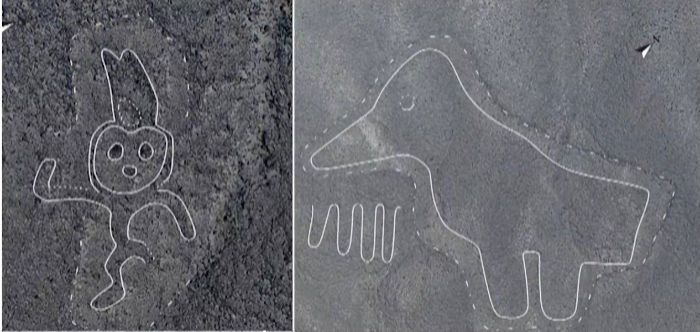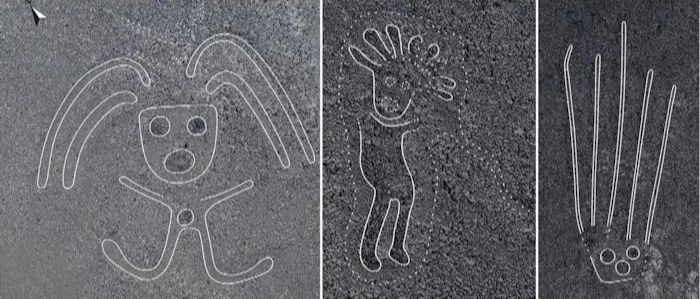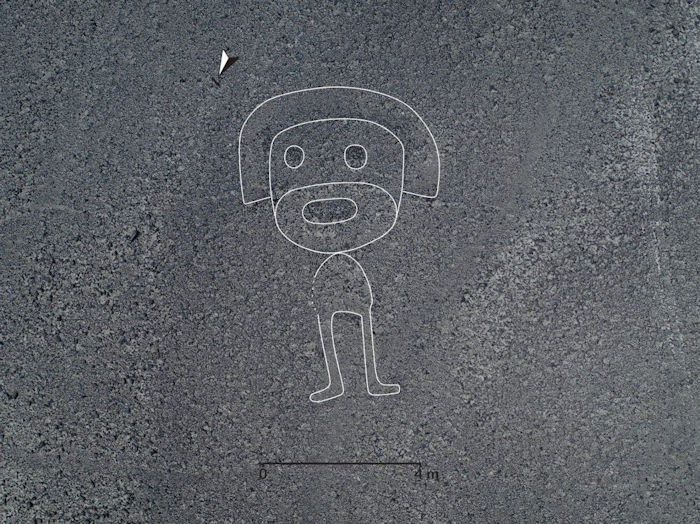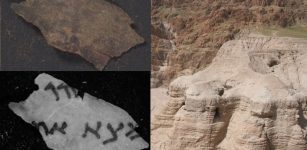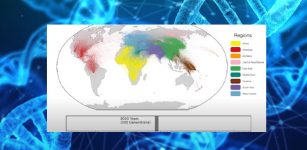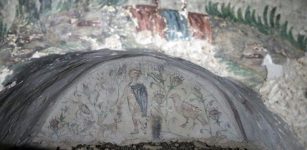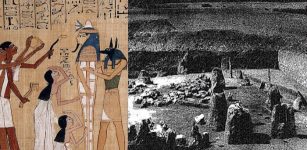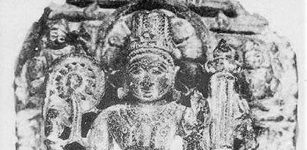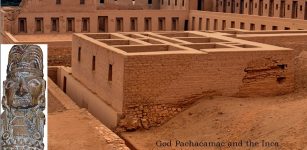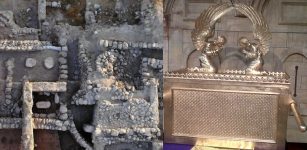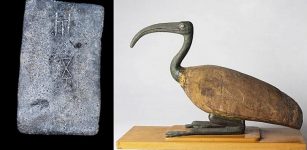168 Unknown Geoglyphs Discovered In The Nazca Desert By Drones
Conny Waters - AncientPages.com - Using drones, archaeologists from Japan’s Yamagata University have discovered 168 previously undocumented geoglyphs on the Pampas de Juman in the Nazca Desert in southern Peru.
The research group was led by Professor Masato Sakai, (Yamagata University, Cultural Anthropology and Andean
Archaeology), in collaboration with Peruvian archaeologist Jorge Olano. Detected on the Nasca Pampa and near the city of Nasca, the 168 previously undocumented geoglyphs depict humans, camelids, birds, killer whales, felines, and snakes.
Two of the geoglyphs detected by drones. Credit: Yamagata University.
The mysterious drawings, often monumental in scale, are thought to date between 100 B.C.E. and 300 C.E.
These geoglyphs were created by removing black stones from the surface of the earth to expose a white sandy surface below. Current research suggests that there are two types of geoglyphs: a linear type and a relief type. Of the geoglyphs discovered in this study, only five are of the former type, while 163 are of the latter type. Most of the geoglyphs of the latter type are small, less than 10 meters in diameter, and are mostly distributed along ancient trails.
Some of the intriguing geoglyphs. Credit: Yamagata University.
Yamagata University has been engaged in research on the Nasca geoglyphs, a World Heritage Site, and has discovered numerous geoglyphs as well as promoted activities to protect them. This research team has received an official permit from the Peruvian Ministry of Culture to conduct archaeological research on the Nasca Pampa. One hundred and ninety geoglyphs of animals and humans have been discovered between 2004 and 2018.
In 2012, Yamagata University established the Institute of Nasca in the city of Nasca, and in 2015, the Ministry of Culture of Peru and Yamagata University signed an agreement committed to the conservation and scientific research of the geoglyphs. Based on this agreement, an archaeological park to protect the geoglyphs discovered by Yamagata University was established in 2017 in the Aja area near downtown of Nasca City.
One of the new Nazca geoglyphs. Credit: Yamagata University.
Adding the newly discovered 168 geoglyphs to the 190 geoglyphs discovered until 2018 results in a total of 358 geoglyphs detected by the Yamagata University team.
The results of this research will be applied to future AI-based surveys of the distribution of Nasca Geoglyphs and their protection.
See also: More Archaeology News
By using the newly discovered geoglyphs for AI analysis, Yamagata University aims to clarify the distribution patterns of the geoglyphs. The results of this research will also be used for geoglyph conservation activities.
Written by Conny Waters - AncientPages.com Staff Writer

